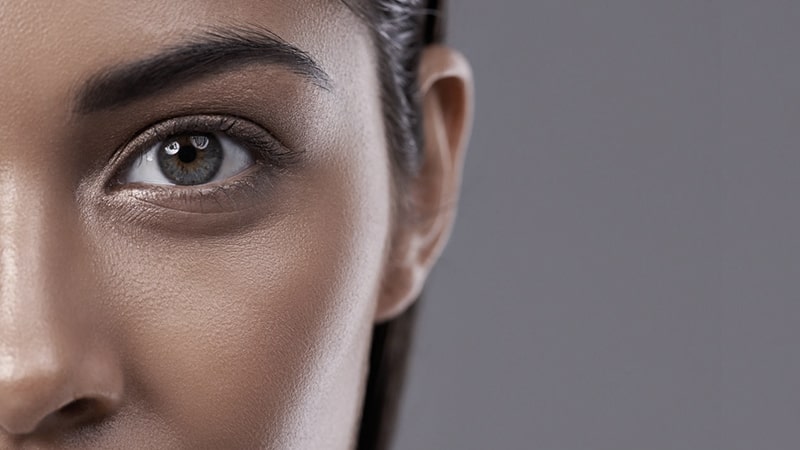

Active acne is a big nuisance; regardless of what age you are. Some of them suffer through puberty and teenage while the rest suddenly see them when they are adults. There is a very large number of people experience acne at least once in life, or sometimes it never leaves or is active well into their 40s or 50’s. At Je Amour, we try to help ease your way into clearer, acne free and blemish free skin like you’ve never seen before. Although Acne is majorly a case of hormones but it is more than just your body chemicals going haywire. Everyone is unique and their acne can also be unique. Whether it is due to unhygienic skin care routine or using products that are not suitable it can very well be a problem that should be handled only by experts.

While there are some home treatments, it’s best to consult an expert for the right treatment. Some treatments include:
Dark circles are not restricted by gender, age or the complexion of the skin. They not only make you look older, but they can make you look completely exhausted at all times by disturbing the harmony of your face. To make matters worse, they are even difficult to get rid of, which makes the, a tricky indication to treat. Dark circles are most commonly seen in elderly people, people with a genetic predisposition, and people with a darker skin tone.
Dark circles are caused by fatigue, age, eye strain, dehydration, sun exposure and even genetic compositions. While these might seem a lot at the moment, they can be treated effectively. Some medical treatments include:
Before any treatment, consult a doctor for the best possible treatment to get rid of under eyes dark circles.

The sebaceous glands are most abundant in the pores on your face, back, chest, and groin. Hormones play a role in stimulating these glands in order to produce more abundant quantities of sebum. That’s why the pores on your face, most specifically those on your nose, forehead, and cheeks, may appear larger than they do on other areas of your body. Any skin type, whether it’s oily, normal, or dry, can take on the appearance of having large, open pores. These may give your skin a dull appearance, particularly if they’re clogged with dirt, bacteria, oil, or dead skin cells. While not a medical concern, open pores can be a cosmetic issue for some people who do not like the way their skin looks. In adolescents, and in adults who are prone to acne, open pores may become clogged, turning into blackheads or whiteheads. Aging skin containing less collagen may also take on the appearance of having larger, open pores, which might also cause concern.
A condition in which brown patches appear on the face. Melasma can be due to hormonal changes during pregnancy or from sun exposure. Women are much more likely than men to develop this condition. The brown or grey-brown patches of melasma appear most often on the cheeks, forehead, nose and chin. In women, melasma often fades on its own after pregnancy or after an affected woman stops taking contraceptive pills. Skin lightening creams can help lasting melasma.
Freckles are circular, small marks on the skin, which are darker than your normal skin tone. Reasonably uniform in colour, freckles are usually the size of a matchstick head. They can start to appear at a young age on sun-exposed areas of the skin, including your arms, hands, shoulders, face and neck. Commonly occurring in people with fair and lighter skin types, freckles can darken in the summer and completely vanish or become lighter in winter. Some people have a genetic predisposition to developing freckles.
Dull skin tone is a result of excess dead skin cells that build up on the surface of the skin. Your skin can lose its natural luminosity because of dryness, damaged cells or slow cell turnover, all of which can happen at any age and in any season. This can make your face feel rough or bumpy, and can also give the skin a dull, lackluster appearance.
If you’re over the age of 30, dull skin is not an uncommon problem. When you’re younger, skin naturally exfoliates every two weeks. This means that a fresh, youthful complexion is unveiled every time the outer layer of dead skin cells is shed, which keeps the complexion young and glowing. Skin can also become dull when blood flow and oxygenation of skin cells is reduced. This is particularly common in smokers who tend to develop dry, dull skin with fine lines.
Skin pigmentation, also known as hyperpigmentation, is a common skin disorder. It’s not limited to your facial skin only; it can occur in any part of the body and is best treated by an expert. The major source of problems is sun exposure or sensitivity to sun exposure. The pigmentation is a normal occurrence but when it is difficult to handle or treat or that it presents itself in the form of patchy uneven spots that it becomes a nuisance. Melanin, which is responsible for your skin’s color, is produced by special cells in the body. When these cells get damaged, it can lead to the unhealthy production of melanin. As soon as excess melanin is created, it leads to the creation of dark patches on the skin.
In addition to these, hormones and health issues can also manifest itself in the form of skin problems. Pigmentation is often noticed as a result of chronic stress as well. Some other situations related to pigmentation include the likes of Vitiligo and albinism. All these occur from the lack of melanin in the body or due to overproduction of the pigment.
Laser is an effective treatment, which is often suggested to people suffering from excess pigmentation problems. Depending on the level of pigmentation, different methods are suggested by the doctors. Some of these methods include, Microdermabrasion, chemical peels, and Fractional Laser Resurfacing. The cosmetic expert, specializing in the field of cosmetology, can suggest the best possible way of removing pigmentation, post consultation.


Thanks for choosing us. Our team will contact you soon.
In the meantime, you can check the direction to our clinic.

Due to some technical issue your appointment was not booked.
Kindly refresh the page and try again.